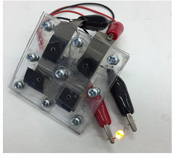Crossref Citations
This article has been cited by the following publications. This list is generated based on data provided by Crossref.
Kaneto, Keiichi
Nishikawa, Mao
and
Uto, Sadahito
2019.
Characteristics of Ascorbic Acid Fuel Cells Using SWCNT and PEDOT*PSS Composite Anodes.
Chemistry Letters,
Vol. 48,
Issue. 12,
p.
1533.
Kaneto, Keiichi
and
Uto, Sadahito
2020.
A new method to evaluate oxygen permeability and biofuel diffusion in barrier films using fuel cells.
Transactions of the Materials Research Society of Japan,
Vol. 45,
Issue. 4,
p.
131.
Kaneto, Keiichi
and
Uto, Sadahito
2020.
Ascorbic Acid Fuel Cells Using Nano Carbon and Conducting Polymer Composites for Anode and Paper for Separator.
Chemistry Letters,
Vol. 49,
Issue. 7,
p.
828.
Kaneto, Keiichi
and
Uto, Sadahito
2021.
Characteristics of Electrolytic Deoxygenation Devices Using SiC and SWCNT Electrodes.
Chemistry Letters,
Vol. 50,
Issue. 2,
p.
342.
Cheng, Po-Wei
Chen, Chun-Yi
Ichibayashi, Taku
Chang, Tso-Fu Mark
Sone, Masato
and
Nishimura, Suzushi
2021.
Metallization of 3D-printed polymer structures via supercritical carbon dioxide-assisted electroless plating.
MRS Communications,
Vol. 11,
Issue. 3,
p.
278.


